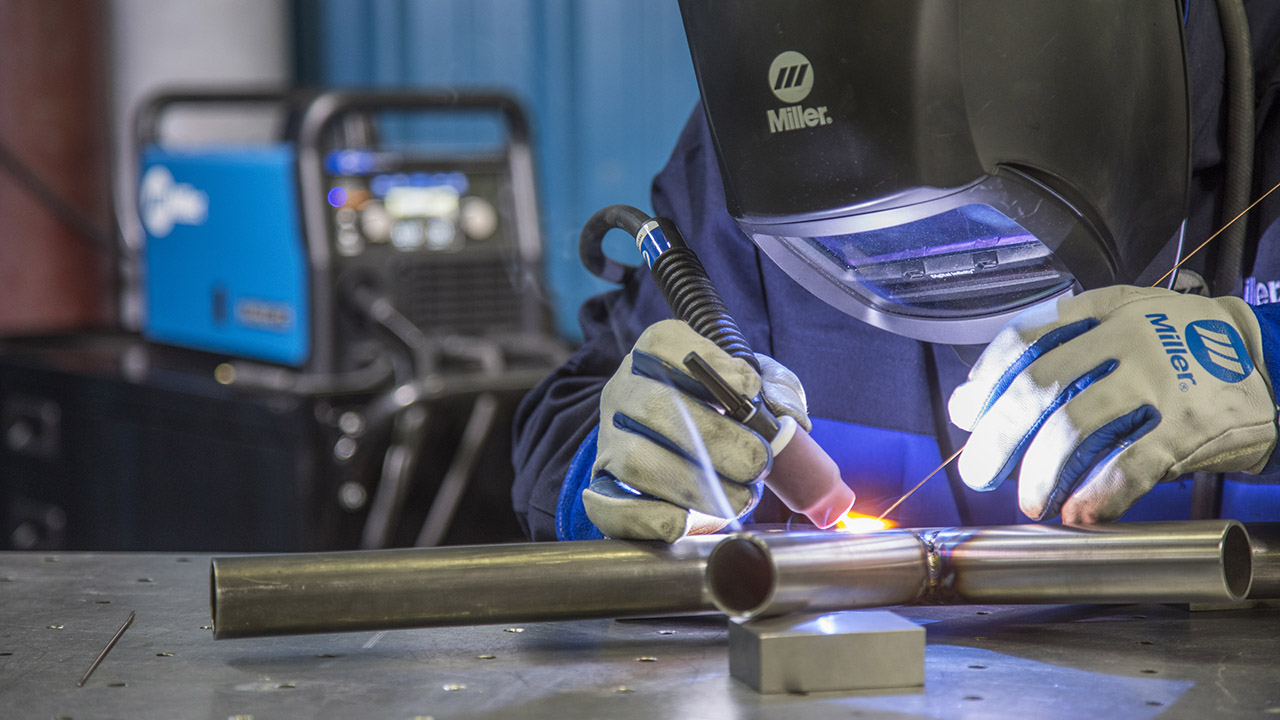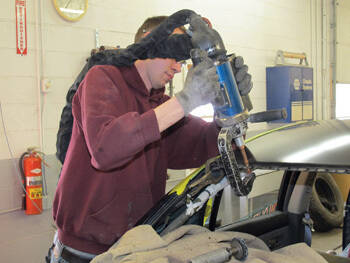Expert welding repair tips from Belgrade Welding professionals
Everything about Welding: Key Insights Into Techniques and Best Practices for Success
Welding encompasses a range of strategies, each fit for particular products and applications. Understanding these approaches, such as GMAW, SMAW, and TIG, is necessary for attaining ideal results. The ideal tools and security practices can not be forgotten. As prep work and troubleshooting play critical roles in the welding procedure, grasping these components can substantially enhance the high quality of the final product. What are the essential factors that assure an effective weld?
Understanding Various Welding Techniques
Welding techniques encompass a range of methods, each suited to specific applications and products. Amongst one of the most common techniques are Gas Metal Arc Welding (GMAW), Secured Metal Arc Welding (SMAW), and Tungsten Inert Gas Welding (TIG) GMAW, additionally recognized as MIG welding, is popular for its speed and convenience, making it optimal for slim materials. SMAW, or stick welding, is preferred for its simplicity and performance in exterior atmospheres, specifically with thicker metals. TIG welding supplies accuracy and control, making it suitable for elaborate work and non-ferrous steels (Montana Mobile Welding and Repair Fabrication). Each technique has its unique advantages and considerations, allowing welders to pick the most effective technique based upon the job's requirements, material kind, and wanted end results. Comprehending these techniques is essential for successful welding
Vital Welding Devices and Tools
While various welding methods need certain abilities, the right equipment and devices are just as vital for attaining high quality outcomes. Necessary welding devices consists of welding machines, which vary depending upon the strategy-- such as MIG, TIG, or stick welding. Protective equipment, consisting of gloves, safety helmets, and aprons, guarantees safety and comfort throughout the process. Furthermore, fixtures and clamps assist secure materials in position, ensuring accuracy in welds. Consumables like welding poles, cable, and protecting gas are additionally vital parts that influence the top quality of the weld. Devices such as cutters and grinders facilitate surface area prep work and post-weld finishing, adding to an expert outcome. Spending in top quality equipment eventually boosts the efficiency and performance of welding jobs.
Safety And Security Practices in Welding
Correct safety practices are crucial in the welding industry to protect workers from possible threats. Welders have to put on suitable individual protective equipment (PPE), consisting of safety helmets with proper shading, gloves, and flame-resistant clothing. Appropriate ventilation is important to reduce direct exposure to hazardous fumes and gases produced throughout the welding process. Additionally, workers should be trained in the correct handling of welding equipment to avoid crashes. Fire precaution, such as keeping combustible products far from the welding location and having fire extinguishers conveniently offered, are essential. Regular assessments of tools and offices can help identify possible threats before they bring about crashes. By sticking to these safety and security methods, welders can develop a more secure working setting and minimize dangers connected with their profession.
Readying Products for Welding
Preparing products for welding is a vital action that substantially influences the quality and integrity of the end product (Fabrication). Proper prep work includes cleaning the surfaces to eliminate contaminants such as dust, rust, and oil, which can endanger the weld. Methods such as grinding, sanding, or utilizing solvents are frequently employed to accomplish a tidy surface area. Additionally, ensuring that the products mesh snugly is necessary; voids can result in weak welds. It's additionally important to take right into account the placement and positioning of the parts, as this will influence the convenience of welding and the last end result. Choosing the suitable filler product and making sure compatibility with the base metals is crucial for accomplishing solid, sturdy welds.
Tips for Getting High-Quality Welds
Achieving premium welds needs focus to information and adherence to finest methods throughout the welding procedure. Proper joint prep work is crucial, making certain surface areas are clean and free from contaminants. Choosing the suitable filler material and welding strategy based upon the base metals is vital for suitable bonding. Keeping constant travel speed and angle while welding can stop defects and advertise harmony. Furthermore, controlling warmth input is necessary; extreme heat can lead to bending and damaged joints. If required, consistently checking the welds during the process allows for prompt adjustments. Finally, using appropriate post-weld therapies, such as cleansing and stress and anxiety alleviation, can boost the longevity and honesty of the weld, inevitably guaranteeing an effective outcome.
Fixing Common Welding Issues
Welding usually provides difficulties that can affect the high quality and integrity of the last product. Common issues such as porosity, irregular weld grains, and overheating can arise, each requiring particular fixing methods. Understanding these troubles is vital for welders to boost wood welding their skills and attain excellent outcomes.
Porosity Troubles Discussed
Porosity can frequently be ignored, it remains a crucial concern in welding that can endanger the stability of a finished product. Porosity describes the existence of tiny gas pockets within the weld bead, which can deteriorate the joint and lead to early failure. This trouble typically develops from contaminants, dampness, or improper securing gas coverage throughout the welding process. To minimize porosity, welders need to verify that the base materials are dry and clean, use suitable securing gases, and maintain constant welding specifications. Frequently inspecting the tools and setting can likewise aid recognize potential issues prior to they materialize in the weld. Resolving porosity efficiently is important for achieving solid, long lasting welds that fulfill quality standards.

Inconsistent Weld Beads
Irregular weld grains can significantly affect the top quality and strength of a completed product. Different elements add to this concern, consisting of incorrect traveling rate, inaccurate amperage setups, and irregular electrode angles. When the welder moves also quickly, a bead may show up slim and do not have infiltration, while relocating also slowly can trigger excessive buildup. In addition, using the incorrect amperage can cause either undercutting or extreme spatter, both of which concession weld integrity. The welder's technique, such as irregular torch motion, can additionally cause irregular bead appearance. To mitigate these issues, welders ought to concentrate on preserving consistent, controlled activities and ensuring correct equipment setups to achieve harmony in their welds. Uniformity is key to accomplishing solid and trustworthy welds.
Overheating and Bending Issues
Too much warm throughout the welding process can cause considerable getting too hot and warping issues, influencing the structural integrity resource of the work surface. These problems often materialize as distortion, which can endanger alignment and fit-up, making more assembly testing. Variables contributing to overheating consist of the option of welding specifications, such as voltage and travel rate, along with the type of material being bonded. To reduce these problems, welders must preserve regular travel speed and ideal warmth input while monitoring the work surface temperature. Additionally, pre-heating or post-weld heat therapy can help reduce stresses triggered by rapid cooling - Montana Mobile Welding and Repair Belgrade. Routine inspection and adherence to best techniques are important in protecting against overheating and guaranteeing the durability and integrity of bonded frameworks
Frequently Asked Concerns
What Are the Occupation Opportunities in the Welding Industry?
The welding market uses diverse job opportunities, including placements as welders, engineers, inspectors, and instructors. Professionals can operate in production, construction, aerospace, and auto industries, taking advantage of strong demand and competitive wages in various duties.
Exactly How Can I Boost My Welding Rate Without Sacrificing High Quality?
To boost welding speed without sacrificing high quality, one must practice efficient techniques, maintain devices, enhance settings, and boost hand-eye coordination. Normal training and seeking feedback can additionally substantially add to achieving quicker, top quality welds.
What Accreditations Are Readily Available for Welders?
Various accreditations exist for welders, consisting of those from the American Welding Society (AWS), the National Center for Building Education And Learning and Research Study (NCCER), and numerous industry-specific companies. These credentials improve employability and show skill proficiency.
How Does Welding Influence the Residences of Metals?
Welding affects the residential or commercial properties of steels by modifying their microstructure, which can result in adjustments in hardness, ductility, and toughness. Warm input and cooling prices during the process substantially affect these product characteristics.
Can I Bonded Dissimilar Metals With Each Other?
